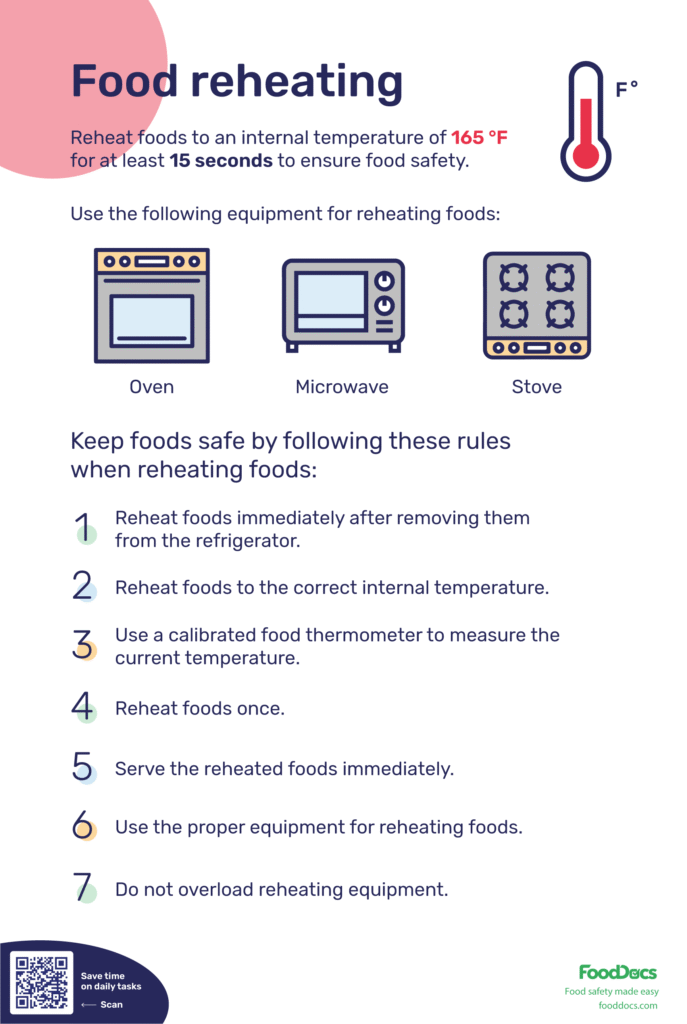
Navigating food labels can sometimes feel like deciphering a secret code. One common phrase you might encounter is “reheat only.” This seemingly simple instruction holds significant implications for both the safety and flavor of your meal. Understanding what it means and how to follow it correctly can elevate your culinary experience while ensuring you’re enjoying your food at its best.
This article will delve into the meaning behind “reheat only” instructions, outlining the crucial food safety considerations and practical tips for preserving flavor during reheating. We’ll explore various reheating methods, provide guidelines for achieving the perfect serving temperature, and empower you to confidently handle pre-cooked meals.
Reheat Only Instructions Defined
What does reheat only mean? Essentially, it signifies that the food product inside your package has already undergone thorough cooking during its initial preparation. This means it’s ready to eat but requires gentle reheating to reach a safe and enjoyable temperature. Think of it as bringing pre-cooked goodness to its peak performance without altering its original culinary essence.
What does this mean for you? It means skipping the stovetop or oven cooking steps that would typically be involved in preparing raw ingredients. Instead, focus on methods like microwaving, warming in a skillet over low heat, or using an oven set at a lower temperature to gently raise the food’s internal temperature.
Food Safety Considerations
Prioritizing food safety is paramount when handling pre-cooked meals. “Reheat only” instructions are designed to ensure that your food reaches a safe internal temperature, eliminating any potential for harmful bacteria growth.
Internal Temperature Guidelines
Always use a food thermometer to verify the internal temperature of your reheated meal. The USDA recommends heating all cooked foods to an internal temperature of at least 165°F (74°C) to ensure that any potentially harmful bacteria are destroyed. This applies to various types of pre-cooked meals, including meats, poultry, fish, and vegetarian dishes.
Time & Temperature Management
While reheating, be mindful of both time and temperature. Avoid prolonged exposure to high heat, as this can lead to uneven heating and potential nutrient loss. Opt for shorter reheating times at lower temperatures to maintain the quality and safety of your food.
Flavor Preservation Tips
Reheating doesn’t have to compromise flavor. By employing a few simple techniques, you can ensure that your pre-cooked meals retain their deliciousness.
Moisture Retention
Pre-cooked foods often contain moisture that can evaporate during reheating. To prevent dryness, consider adding a splash of broth, water, or sauce to the dish before heating. This will help keep the food moist and flavorful.
Seasoning & Flavor Enhancers
Don’t be afraid to add a touch of seasoning or flavor enhancers during the reheating process. A sprinkle of herbs, spices, or a squeeze of lemon juice can elevate the taste of your meal and make it more appealing.
Reheating Methods
There are various methods for reheating pre-cooked meals, each with its own advantages and considerations.
Microwave Heating
Microwaving is a quick and convenient option for reheating small portions of food. However, be cautious as microwaves can sometimes lead to uneven heating or overcooking. Stir the food halfway through the reheating process to ensure even distribution of heat.
Oven Reheating
For larger portions or dishes that benefit from gentle, even heating, oven reheating is a great choice. Preheat your oven to a low temperature (around 300°F or 150°C) and place the food in an oven-safe dish. Cover the dish with foil to prevent moisture loss and heat for approximately 20-30 minutes, or until heated through.
Stovetop Reheating
Reheating on the stovetop allows for precise temperature control and can be ideal for dishes that benefit from a slight browning or crisping effect. Use a skillet over low heat and add a small amount of oil or butter to prevent sticking. Stir the food frequently to ensure even heating.
Serving Temperature Guidelines
Always serve your reheated meals at a safe internal temperature of 165°F (74°C). This ensures that any potential bacteria are eliminated, making your meal both delicious and safe to enjoy.
Conclusion
Understanding “reheat only” instructions empowers you to handle pre-cooked meals with confidence, ensuring both food safety and optimal flavor. By following the guidelines outlined in this article, you can confidently reheat your favorite dishes, savoring their deliciousness while prioritizing your well-being. Remember, a little attention to detail goes a long way in transforming a simple reheated meal into a satisfying culinary experience.
